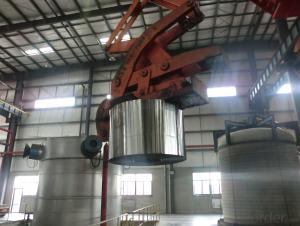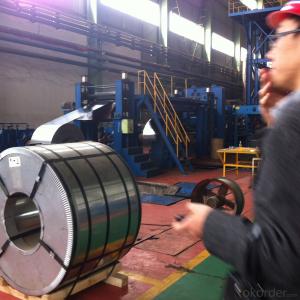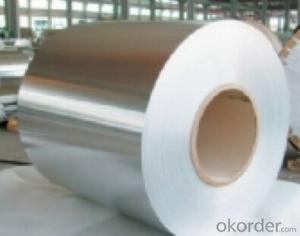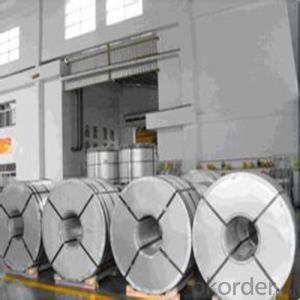tin free steel sheet for crown caps
- Loading Port:
- China Main Port
- Payment Terms:
- TT OR LC
- Min Order Qty:
- -
- Supply Capability:
- -
OKorder Service Pledge
Quality Product, Order Online Tracking, Timely Delivery
OKorder Financial Service
Credit Rating, Credit Services, Credit Purchasing
You Might Also Like
Temper | Hardness Guarantee (HR30T)HR30T | Applications |
T2 | 52±3 | Rings and plugs, pie pans, closures, shallow drawn and specialized can parts. |
T2.5 | 55±3 | Battery can bodies, small can ends and bodies. |
T3 | 57±3 | Can ends and bodies, large diameter closures, crown caps. |
T4 | 61±3 | Can ends and bodies, crown caps and small screw closures. |
T5 | 65±3 | Can ends and bodies for non corrosive products. |
DR-8 | 73 ± 3 | small diameter round can bodies and ends |
- Q: Can tinplate be used for automotive components?
- Yes, tinplate can be used for automotive components. Tinplate is a type of steel coated with a thin layer of tin, which provides corrosion resistance and aesthetic appeal. It is commonly used in the automotive industry for various components such as fuel tanks, oil pans, and engine covers.
- Q: What industries commonly use tinplate?
- The industries that commonly use tinplate include the food and beverage industry, packaging industry, automotive industry, and electronics industry.
- Q: What is the difference between tinplate and tin-free steel?
- Tinplate is a type of steel coated with a thin layer of tin, which provides corrosion resistance and enhances its appearance. On the other hand, tin-free steel refers to steel that does not have a tin coating, making it more cost-effective but also less resistant to corrosion.
- Q: How does tinplate contribute to the reduction of plastic waste?
- Tinplate contributes to the reduction of plastic waste by providing a sustainable alternative for packaging. Tinplate containers are durable, recyclable, and can be reused multiple times. This reduces the need for single-use plastic packaging, thereby minimizing the amount of plastic waste generated.
- Q: Can tinplate be used for packaging of frozen foods?
- Yes, tinplate can be used for packaging of frozen foods.
- Q: How is tinplate tested for quality assurance?
- Tinplate is tested for quality assurance through various methods including visual inspection, measurement of physical properties, assessment of coating quality, and evaluation of corrosion resistance. These tests ensure that the tinplate meets the required standards and specifications before it is used for packaging or other applications.
- Q: What are the different methods of disposing of tinplate packaging?
- Some of the different methods of disposing of tinplate packaging include recycling, reusing, and landfill disposal. Recycling involves separating the tinplate from other materials and sending it to recycling facilities to be processed into new products. Reusing tinplate packaging can involve repurposing it for storage or other purposes. If recycling or reusing is not possible, tinplate packaging can be disposed of in landfills, although this should be the last resort as it contributes to waste accumulation.
- Q: Can tinplate be used for electrical applications?
- Yes, tinplate can be used for electrical applications. Tinplate is a thin steel sheet coated with a layer of tin, which provides corrosion resistance and electrical conductivity. This makes it suitable for manufacturing electrical components and devices such as cans, containers, and small appliances.
- Q: What are the main challenges in tinplate manufacturing?
- Some of the main challenges in tinplate manufacturing include ensuring consistent quality of the tin coating, maintaining precise thickness and uniformity of the tinplate, managing the handling and storage of the tinplate to prevent damage or contamination, and addressing environmental concerns related to the tin coating process and waste disposal. Additionally, the industry faces the challenge of meeting customer demands for cost-effective production while adhering to strict regulatory standards and keeping up with technological advancements.
- Q: Can tinplate be used for packaging fragile items?
- Yes, tinplate can be used for packaging fragile items. Tinplate is a strong and durable material that provides excellent protection against damage. Its resistance to impact and ability to withstand pressure make it suitable for packaging fragile items safely. Additionally, tinplate's ability to resist corrosion ensures that the packaging remains intact and protects the fragile items throughout the shipping or storage process.
Send your message to us
tin free steel sheet for crown caps
- Loading Port:
- China Main Port
- Payment Terms:
- TT OR LC
- Min Order Qty:
- -
- Supply Capability:
- -
OKorder Service Pledge
Quality Product, Order Online Tracking, Timely Delivery
OKorder Financial Service
Credit Rating, Credit Services, Credit Purchasing
Similar products
Hot products
Hot Searches
Related keywords






























